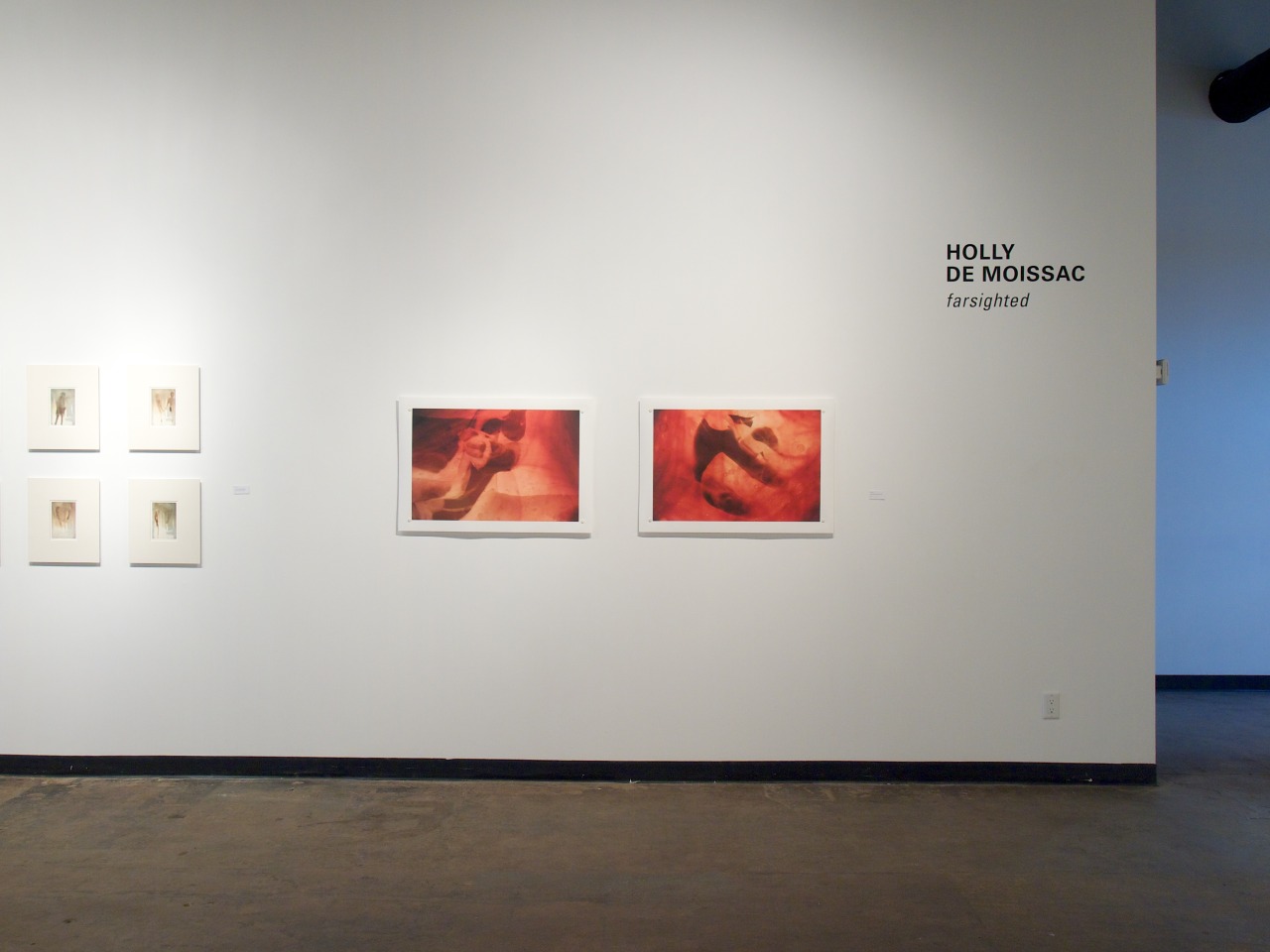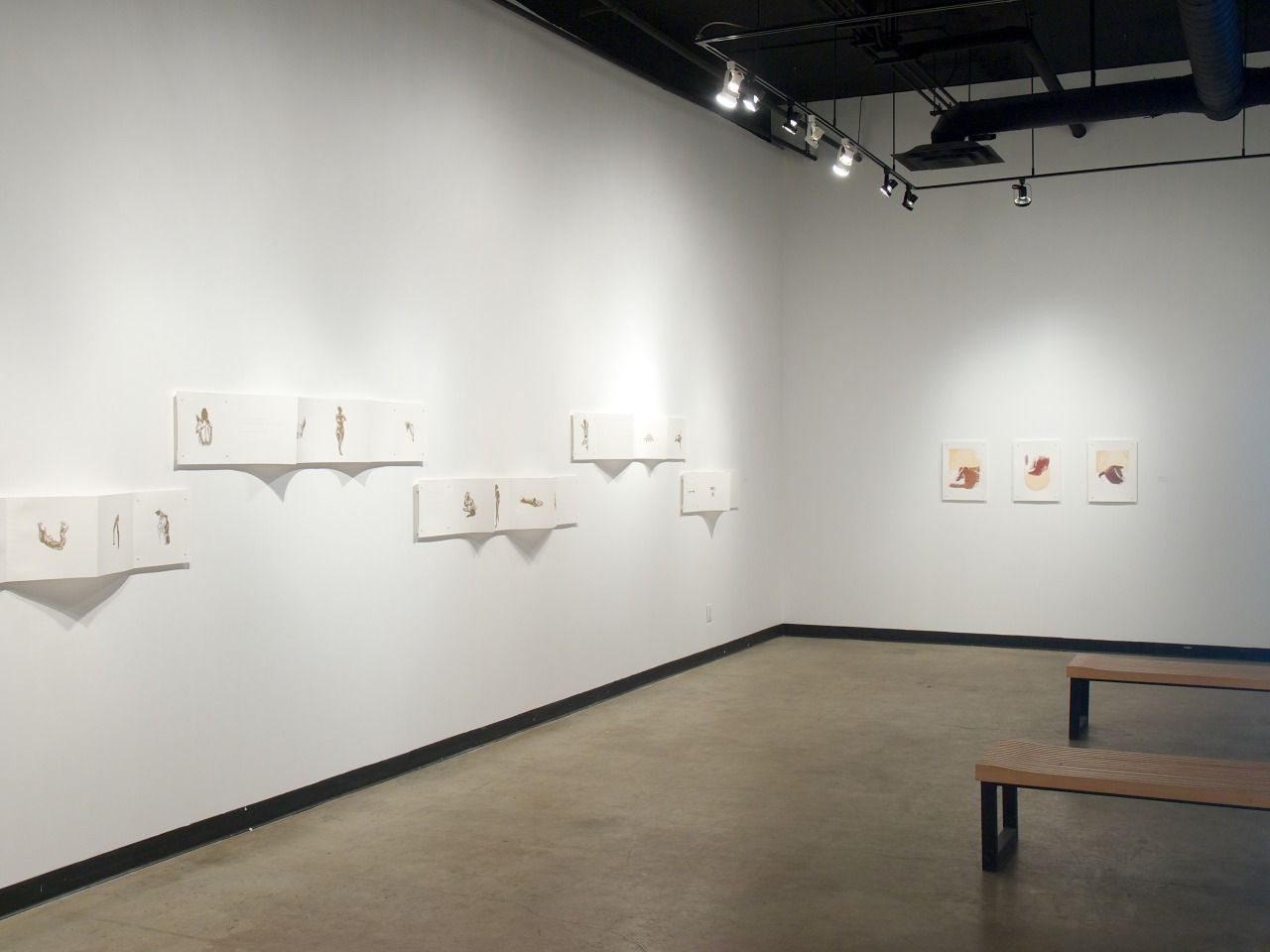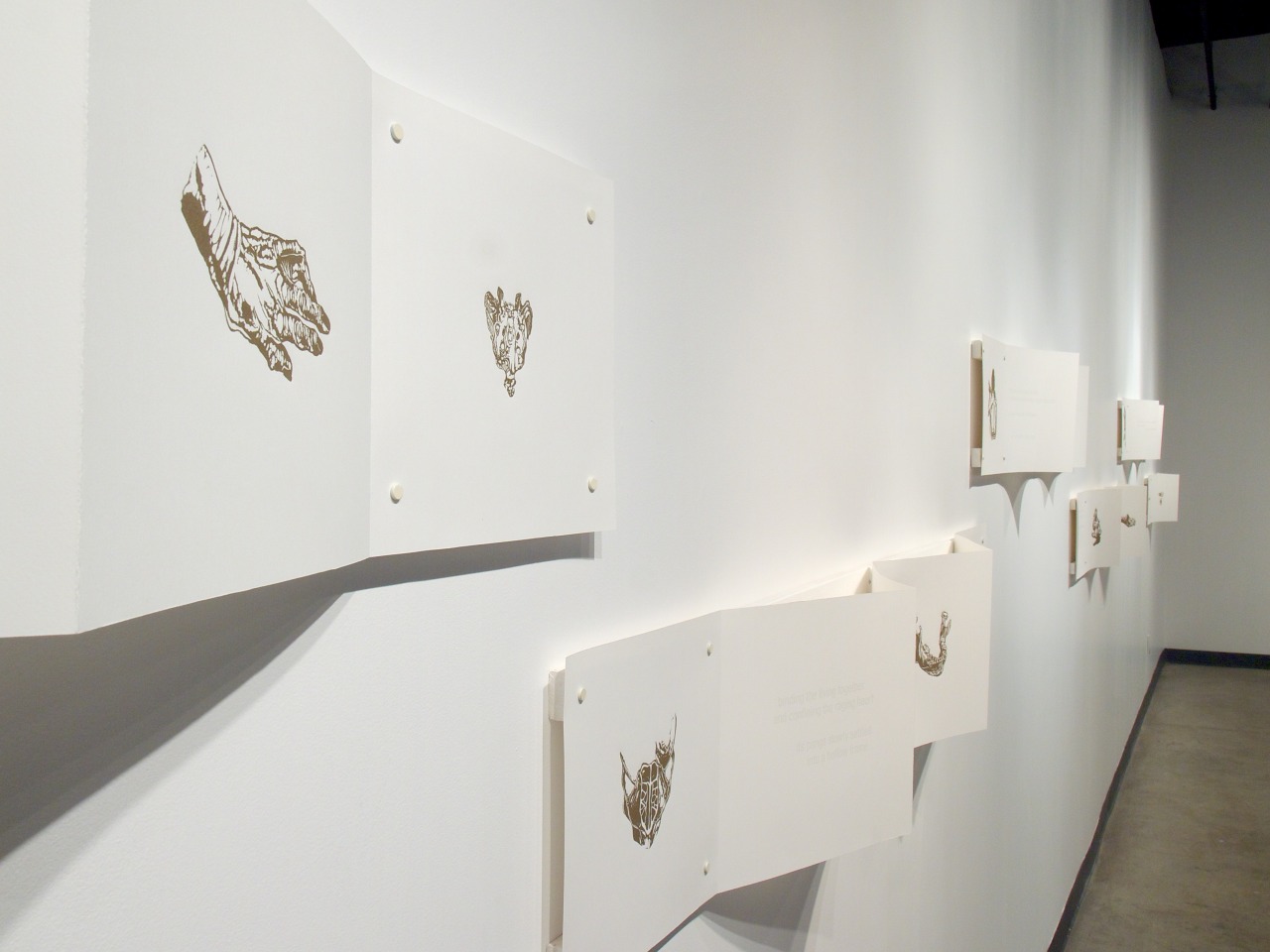Holly de Moissac | farsighted
February 13 – March 28, 2015
Artist Talk | Saturday, February 28
Painter and printmaker Holly de Moissac is an emerging visual artist and graduate of the University of Alberta BFA Fine Arts & Design program. Crafted from a variety of materials–gold leaf, photographs of abandoned structures in Detroit, texts, and lithographs of human bodies–her work is arranged to evoke feelings about decomposition, dilapidation, and rot.
farsighted inverts the context in which we typically see decay, prompting us to consider the potential for beauty within the process of falling-apart.
Theodore Fox on Holly de Moissac’s ‘farsighted’
“sitting here in this just portion/—one hundred and twenty-eight pounds/my single measure of fullness/and i stir within the cage.”
- Undiminished (2015)
Although the artist presents farsighted as concerned with comparing the decay of humans and their surroundings, I was most drawn by her invoking of ‘the cage’ in the text of Undiminished (2015)—the exhibit appears to me to be at least partly concerned with the containers in which we put ourselves.
Ourselves as the spaces we keep, the body itself, the mind, the soul. Ourselves as a magical nesting box that is able to configure itself in different ways. The various prints examine the person in its various containers: protectors, or at the very least witnesses and co-conspirators to the body in its various forms.
Undiminished (2015) introduces the idea of the cage, but also (literally) dissects a cage. The piece stretches most of the length of a wall and alternates between pages of poetry and prints of anatomical drawings of skeletons—the skeleton being the most immediate cage to a human, its bars keeping the flesh of our body both safe and locked up. One small bone (too isolated from the whole skeleton for me to have any idea of its utility within the body) appears to be a fish-hook, a cross section of another bone looks like a flower, a jaw sitting on its own looks like it would be a good hat-hook. But all of these skeletal components allude to the individual as a whole, insofar as they appear as fragments of the body’s container.
Internment I-III (2015) present the body, simultaneously bony and mushy, disappearing into cloudy masses, into grey matter. Of the human figures on display, these are the bodies that are presented most concretely. Their heads are subsumed by the grey, a suggestion of the mind superseding and consuming the body. Perhaps this represents the shock of having sound mind, but watching one’s body become more infirm, or the inverse: possessing a body whose pilot has become lost in fog.
Lingering (2013) is the only piece in ‘farsighted’ that shows two figures inhabiting the same space—if “inhabiting” is even the right word for the state of these spectres. Or if the similarly ghostly street-scenes they inhabit are corporeal enough to be “inhabitable.” Are these lingerings memories? Memories, the manifestation of the self’s past along with its surroundings are a form of the self contained in the mind, constantly decaying. Perhaps this is also the relationship depicted in Shifting (2013), which shows a decrepit room inhabited by a ghost standing handsomely in his underwear. Intriguingly, in this piece the room is given a much clearer identity than its inhabitant; rather than a human keeping a memory of a room, the room is empowered to possess a memory of its inhabitant,who may have been responsible for those first cracks which led to the fissures in the walls and frames of the room.
Indwelt (2015) places its subjects in utero, adult humans wrapped around themselves in a space shared with a reddish bubbly fluid. The Oxford English Dictionary defines “to indwell” both literally—“to dwell in, inhabit, occupy as a dwelling”—and figuratively—“to live in, occupy, or possess, as a spirit or principle may inhabit a body.” It’s possible that the “indwelt” figure is merely residing in the uterus, as in the first definition of the word. But the figure in utero is not the expected foetus—rather, it is an adult body, which suggests the second definition: perhaps it’s a manifestation of the human spirit that possesses this motherly space? I am inclined to think that this human contained within another human is a representation of love; the unseen caretaker surrounding the visible human is offering the figure support…but the other half of this relation is a sort of possession, a loss of independence for the caretaker. In any case, the suggestion is of a human being or spirit contained by another human. A cage relationship can be useful for both the caged and cage.
Finally, Subsiding (2015) banishes the figure of the human, instead displaying crumpled notes paired with images of their environment, a wall of shattered windows, a weathered bible. Were these notes written in these places, or did they arrive here from elsewhere? Human thoughts are transferred to the pages, made independent of the minds that create them. Now, they exist on their own in an environment that, like them, is in the process of decaying.
One does not decay alone, but always in relationship with one’s surroundings. farsighted inflicts decay on all of its subjects but refuses to let them fall apart without company. The way that notion of “the human” shifts from piece to piece, and the way that humans seem to identify with the spaces around them makes the work feel optimistic, phrasing decay as an aspect of building relationships, rather than as a march of despair. One must imagine the cage happy in being a cage, as I am certainly grateful to those entities which prevent or delay my being diffusing into nothing. The work itself is presumably grateful for being protected and trapped on the pages where it has been printed, and similarly those pages are imbued with value for their role. One can extend this to the relationship of the show with the gallery itself, both preserve each other–the former enclosed within the latter–and live better for it.
-
Theodore Fox is a poet and performance artist from Edmonton, AB whose work is mostly concerned with examining gender and sexual expression, along with the convergence of internet and non-internet realities. He has performed at Latitude 53, the Found Festival, and the Gender Fuck Cabaret. He also co-facilitated and performed at the LART events from 2012-2013 and in 2014 created ‘textlit’, an anthology of early internet writing, presented as part of the Internet Archive Tumblr Residency.





